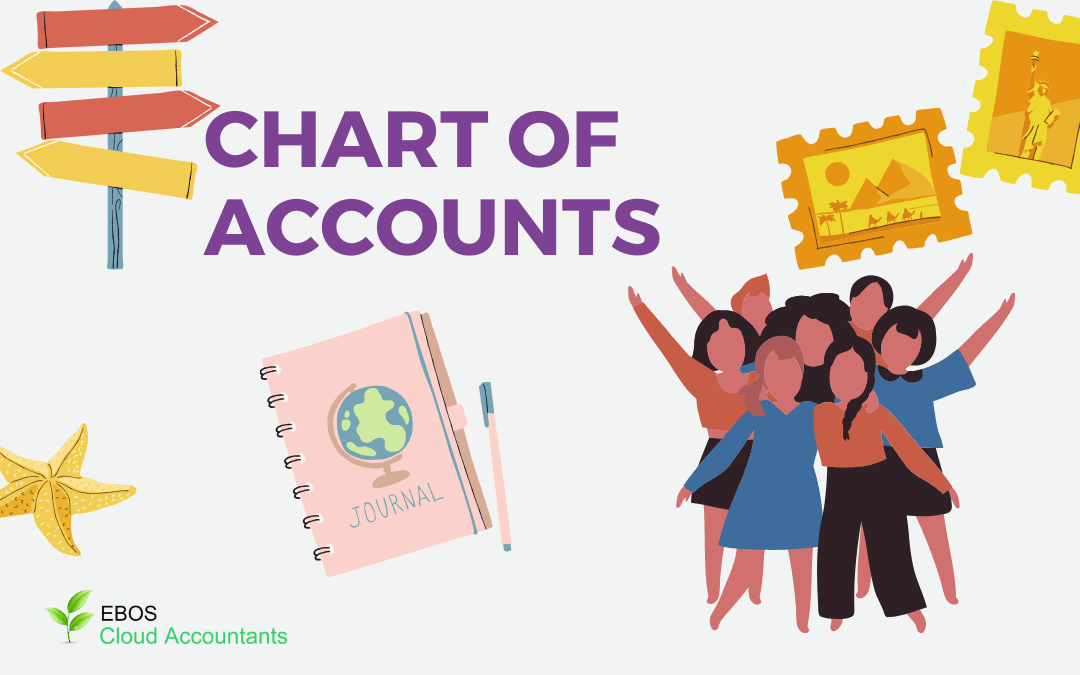What is the chart of accounts?
A chart of accounts is the list of all the accounts you use to organize your accounting records in a Cloud Accounting Software. It is made up of balance sheet accounts (assets, liabilities, and equity) and income statement accounts (income and expenses). The balance sheet and income statement accounts are made up of summary and detail accounts.
Setting up a business is easy with online incorporation but classification in your Cloud Accounting Software needs assistance from a trained accountant.
Why is the chart of accounts important?
It is important that you have a consistent coding system for your Chart of Accounts, particularly if you have multiple people (such as the cloud accountant, the sales coordinator , the virtual assistant, the business owner, and the sales guy who’s raising invoices…) adding transactions to your software.
You need to have an extremely specific description of which transactions should be coded to each category so that your data is consistent over time. Unless you have the name of every single account in your books memorized, you need to have all of them laid out in front of you, like a map.
A well-designed chart of accounts should separate out all the company’s most important accounts and make it easy to figure out which transactions get recorded in which account. It should let you make better decisions, give you an accurate snapshot of your company’s financial health, and make it easier to follow financial reporting standards.
Companies in different lines of business will have different looking charts of accounts. The chart of accounts for a F & B company will have a lot more references to “food items” than your local consulting company. The chart of accounts should give anyone who is looking at it a rough idea of the nature of your business by listing all the accounts involved in your company’s day-to-day operations.
Profit and loss accounts
Income (or revenue) accounts record amounts earned by the business
Expense accounts record amounts spent on business activities (not including any withdrawals, dividends, or distributions to owners or shareholders)
Balance sheet accounts
Asset accounts represent the value of what you own, including cash, inventory, fixed assets, and other things.
Liability accounts represent what you owe to others outside the business, including loans, employee wages earned but not yet paid, and so forth.
Equity accounts record how much money is invested in the business, including profits that have not been distributed. Equity can be thought of as the net worth of a business. (Net worth is different from value, which is what someone might pay to buy the business.)
Reference numbers
You will notice that each account in the chart of accounts may have a four-digit reference number preceding it. The first digit in the account number refers to which of the five major account categories an individual account belongs to — “1” for asset accounts, “2” for liability accounts, “3” for equity accounts, etc.
Adjusting Your Chart of Accounts
You can add as many accounts as you want throughout the year, but you should never delete any old accounts, or it could mess up your books and cause problems.
Chart of Accounts is the backbone of the cloud accounting services. If changes do need to be made, it might be best to record it under a new account for that particular item or category rather than recording it in the regular expense account area it would have initially been put.
If you are not a trained accountant, it is always beneficial to have a Cloud Accountants to perform monthly check on your accounts and your Chart of Accounts. This can help keep things adjusted properly without messing up the numbers in other categories throughout the year. To understand your tax and accounting status, start organizing your finances with a customised Chart of Accounts and give director and shareholders more insight into the financial health of the company.
Numbers don’t lie.







